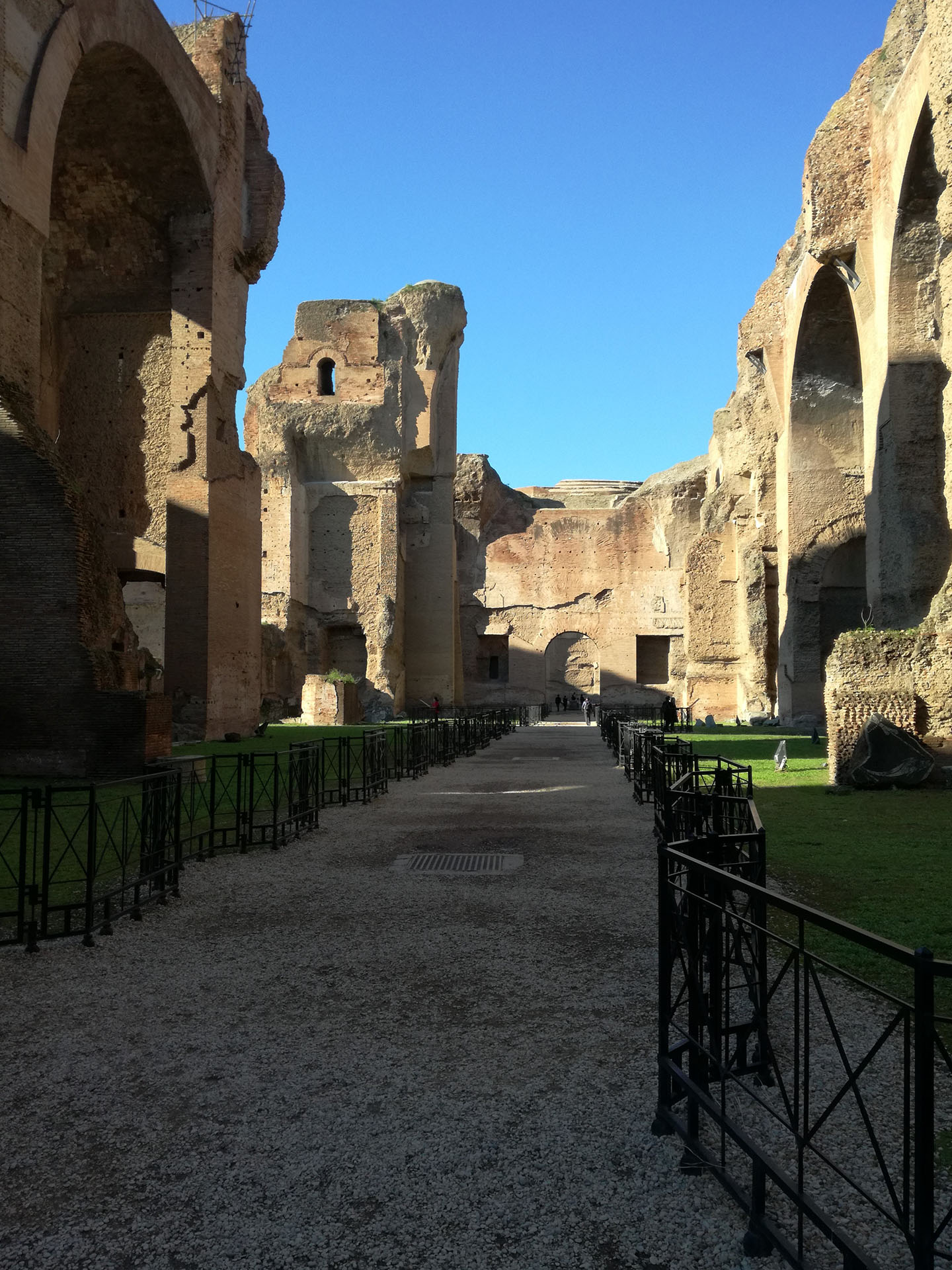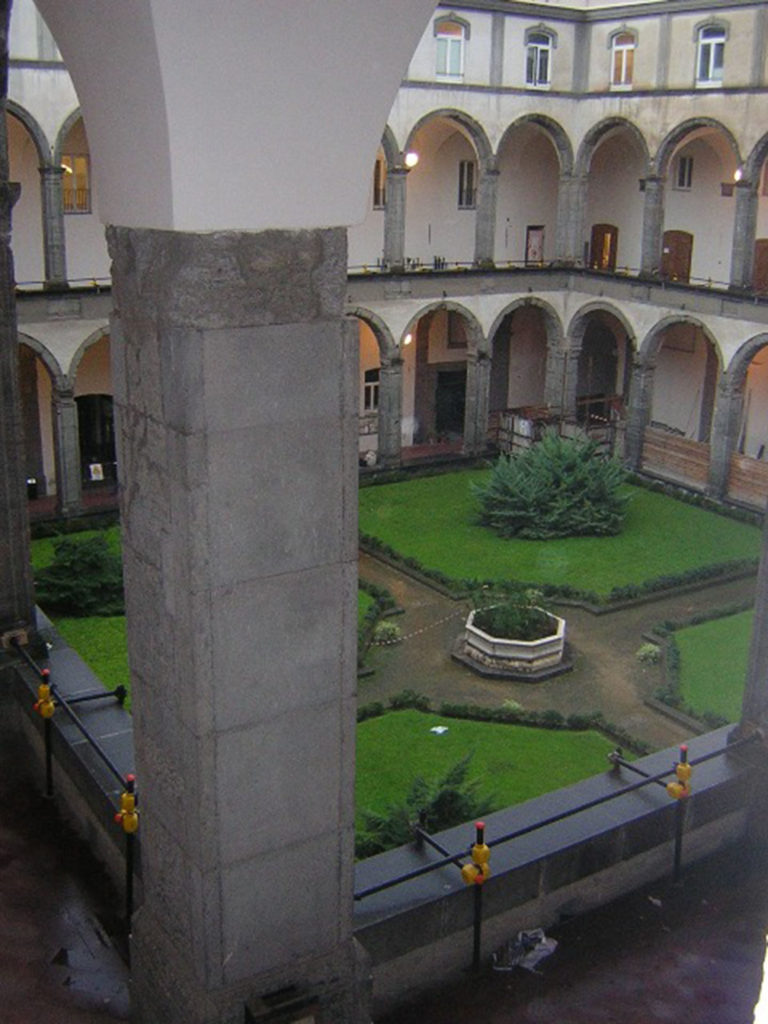St. Peter Martyr Complex - Naples
The Building Complex of St. Peter Martyr, the current seat of the Faculty of Letters and Philosophy, includes the vast monastery, with the large cloister, while the church of the same name, adjacent to it, once intended for the dual office of the convent and the public, has retained its public religious function, but is also used as a University Chapel and is entrusted to the Dominicans, who were the recipients of the primitive donation from which those buildings originated.
The entire Complex was founded in 1249 by Charles II of Anjou. Within the Complex, of notable importance is the presence of the cloister, evidently designed by Di Palma; it features piperno pillars and arches of Doric order. But unlike other factories, Di Palma places the pillars of the lower order on a high basement, at which he outlines a masonry parapet, so as to isolate the central space from the ambulatory. At present, the original configuration of the cloister's basin is unknown, but reliable sources confirm the presence of a fountain, which used the resurgent waters discovered in 1428. Following the suppression of religious orders by Joseph Bonaparte came the transformation of the Dominican Convent into a Tobacco Factory.
The Complex underwent considerable modifications in order to accommodate large and heavy machinery; the rooms were divided in height by new floors, for which primary support elements such as nailed composite truss beams were used. The state-run Manifattura Tabacchi lasted there until 1943, when bombings that damaged the nearby church also severely affected the former convent, leading to the need to build a new structure along Via Galileo Ferraris, which is still active today. The building complex remained abandoned, to the point that it was considered for demolition in order to make a square out of it, until, on the initiative of Rector Giuseppe Tesauro, with a deed dated July 13, 1961, it was acquired by the University, and was initially designated as the seat of the Faculty of Law. Later, during 1962, the decision was made to place there the seat of the Faculty of Humanities.
The interventions carried out involved the restoration and functional recovery of the Complex. The work includes a series of maintenance works, accompanied by the construction of filter zones, adjustment of compartments, redoing of plastering and painting, adjustment and integration of the electrical, water and heating system. All activities had as their main objective the respect and preservation of the Monumental Complex, optimizing spaces and ensuring a better use of it.







